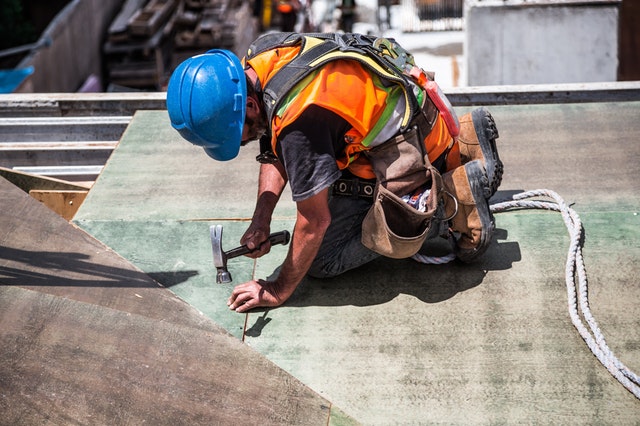Key Takeaways
- Knowing the common causes of construction site accidents.
- Discover effective safety measures and protocols to reduce accidents.
- Explore the role of technology in enhancing construction site safety.
Construction sites in Florida, especially in Gainesville, are inherently hazardous environments, bustling with various activities and heavy machinery. The good news is that the proper safety measures and practices can mitigate many of these risks. This article delves into the essential safety practices that can help prevent accidents on construction sites. Whether you need a Gainesville construction accident lawyer or simply looking to enhance your construction site safety, these tips can be valuable in ensuring a safer working environment for everyone involved.
Common Causes of Construction Site Accidents
- Falls from heights
- Slips, trips, and falls
- Struck-by accidents
- Electrocutions
- Caught-in/between hazards
Understanding these common causes can help in designing effective safety protocols. Falls from heights are among the most prevalent types of accidents, often due to inadequate fall protection measures or slippery surfaces. Slips, trips, and falls can occur from uneven surfaces, debris, or wet conditions, posing significant hazards. Struck-by accidents typically happen when workers are hit by falling objects or moving equipment, necessitating vigilance and proper safety barriers. Electrocutions are a severe risk when working with electrical systems, emphasizing the importance of secure electrical practices. Caught-in/between hazards occur when a worker becomes trapped between machinery or other objects, highlighting the need for stringent safety checks and procedures to prevent such incidents.
The Importance of Safety Training
Safety training is crucial in educating workers about the potential hazards on construction sites. Regular training sessions keep safety protocols fresh in everyone’s mind and reinforce the importance of adhering to them. According to OSHA’s safety guidelines, continuous education is vital for accident prevention. Workers should be trained on adequately using equipment, recognizing hazardous conditions, and following safety protocols to minimize the risk of accidents. Safety drills and simulations can also be beneficial, giving workers practical experience in managing emergencies. This training helps prevent accidents and ensures that every worker on the construction site is well-prepared to respond effectively if an incident occurs.
Mandatory Safety Equipment
- Hard hats
- Safety goggles
- Gloves
- High-visibility clothing
- Fall protection gear
The chance of accidents occurring on building sites can significantly decrease when safety equipment is used correctly. Hard helmets shield workers’ heads against impact with stationary or falling objects. Safety goggles protect the eye from dust, debris, and hazardous chemical spills. Gloves offer critical protection for the hands against cuts, abrasions, and exposure to toxic substances. High-visibility clothing makes it easier to spot workers, especially in low-light conditions or areas with heavy machinery, reducing the risk of struck-by accidents. When working at heights, fall protection equipment is essential. It offers a safety fallback to prevent severe injuries from falls. Examples of this equipment include harnesses, guardrails, and safety nets.
Effective Safety Measures and Protocols
Implementing detailed safety protocols is essential to maintain a safe construction site. It includes setting up guardrails, ensuring proper scaffolding, and maintaining equipment in optimal condition. The CDC’s work safety topics provide valuable recommendations for establishing effective safety measures. Guardrails should be installed around all open-sided platforms, walkways, and holes in the floor to prevent falls. Scaffolding must be erected on solid ground, adequately secured, and regularly inspected for stability and integrity. Equipment should be maintained according to the manufacturer’s guidelines, and any malfunctioning equipment should be taken out of service immediately to prevent accidents. Proper signage indicating hazardous areas and emergency exits is also crucial to an effective safety protocol.
Role of Technology in Enhancing Safety
Innovative approaches to building site safety have been made possible by technological advancements. Wearable technologies, safety apps, and drones are just a few instances of how technology may improve safety precautions. Drones can survey construction sites and identify potential safety hazards from a bird’s eye view, providing a comprehensive assessment that might be missed from the ground. Wearable technology, such as intelligent helmets and safety vests equipped with sensors, can monitor workers’ vital signs and environmental conditions, alerting them to dangerous situations or potential health risks. Safety apps offer tools for quick access to safety checklists, incident reporting, and emergency contact information, ensuring that vital resources are just a click away. By integrating these technologies into daily operations, construction sites can monitor and manage safety risks more effectively.
Real-Life Examples of Safety Protocols in Action
Discussing real-life examples can offer practical insights into the implementation of safety practices. For instance, a significant construction company in New York implemented a comprehensive fall protection program, including regular training sessions, strict enforcement of safety protocols, and mandatory use of fall protection gear. As a result, they observed a significant reduction in fall-related accidents, demonstrating the effectiveness of these measures. Additionally, another construction firm in California adopted the use of drones to monitor their construction sites. This technology enabled them to identify and mitigate potential hazards before they escalated, significantly reducing the incidence of accidents on their sites. These examples highlight how rigorous safety protocols and modern technology can substantially improve worker safety on construction sites.
Conclusion
Preventing construction site accidents requires a multifaceted approach that combines proper training, the use of safety equipment, effective protocols, and technology adoption. Remember, whether you’re seeking legal help from a construction accident lawyer or looking to improve safety on your site, the focus should always be on preventing accidents before they happen. Making safety a top priority protects workers, enhances productivity, and maintains the construction company’s reputation.

